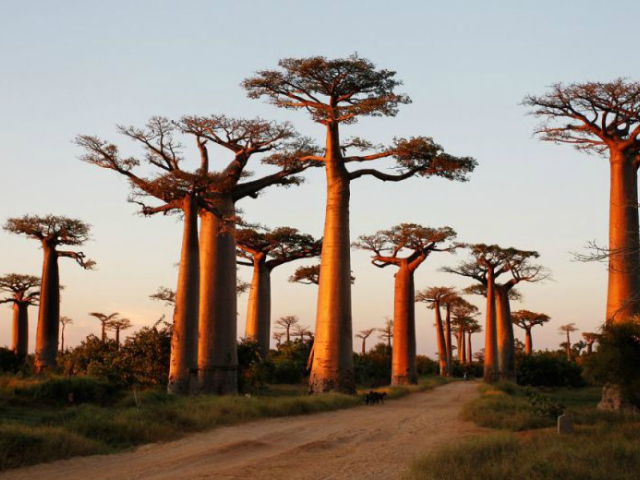Uttarakhand Switch to Hindi
Kumaon Fan Palm Under Conservation
Why in News?
The Uttarakhand Forest Research Wing has reached a milestone by growing 300 seedlings of this native plant at Paatalthod nursery in Pithoragarh.
Key Points
- This initiative was started in an effort to revive and conserve the Kumaon palm, also known as the Kumaon Fan Palm.
- It is the only palm species known to survive in sub-zero temperatures and is called the hardest palm in the world.
- According to the forest research wing, the plant species has been classified as 'threatened' by both the International Union for Conservation of Nature (IUCN) and the Uttarakhand Biodiversity Board.
Kumaon Fan Palm
- The palm tree is native to the Kumaon division of Uttarakhand Province in northwestern India, and into adjacent western Nepal.
- The palm grows at altitudes of 1,800–2,700 m (5,900–8,900 ft) and it receives snow and frost on a regular basis in its native habitat.
- Its scientific name is Trachycarpus takil.
International Union for Conservation of Nature
- It is a membership union uniquely composed of both government and civil society organisations.
- Created in 1948, it is the global authority on the status of the natural world and the measures needed to safeguard it.
- It is headquartered in Switzerland.
- The IUCN Red List of Threatened Species, is the world's most comprehensive inventory of the global conservation status of plant and animal species.
Rajasthan Switch to Hindi
Child Marriages in Rajasthan
Why in News?
The Rajasthan High Court directed the state government to ensure that no child marriages are solemnised in the state and that village heads and panchayat members would be held accountable if such marriages happened.
Key Points
- The court's order came ahead of the Akshay Tritiya festival on 10th May 2024, as several child marriages were solemnised on Akshay Tritiya in Rajasthan.
- The court, while hearing a Public Interest Litigation (PIL) by Just Rights for Children Alliance seeking the court's intervention to prevent child marriages, noted that despite the Prohibition of Child Marriage Act 2006, child marriages are still taking place in the state.
- Under Section 11 of the Prohibition of Child Marriage Act 2006, Sarpanch and Panch will be held responsible if they negligently fail to prevent child marriages from being solemnised.
- As per Rajasthan Panchayati Raj Rules 1996, a duty is cast upon Sarpanch to restrict child marriages.
Prohibition of Child Marriage Act, 2006
- This Act replaced the Child Marriage Restraint Act, 1929 which was enacted during the British era.
- It defines a child to mean a male below 21 years and female below 18 years.
Related Initiatives:
- Dhanalakshmi Scheme: It is a conditional cash transfer scheme for a girl child with insurance coverage.
- It also aims to eliminate child marriage by offering parents insurance coverage of medical expenses and encouraging the education of the girl child.
- Beti Bachao Beti Padhao (BBBP): It aims to empower girls through education, health and protection, and discourage child marriage.
Rajasthan Switch to Hindi
Illegal Mining in the Aravalli Range
Why in News?
Recently, The Supreme Court verbally stated that illegal mining in the Aravalli range in Rajasthan should be stopped.
Key Points
- According to the court's amicus curiae (impartial adviser), the Rajasthan government tried to deceive the court by recognizing only mountains that were at least 100 meters high as belonging to the Aravalli Range, while not including shorter hills in the range.
- Aravalli is the only geographical feature that stops dry winds from coming to the Gangetic Plains that come from Afghanistan and Pakistan.
- Aravalli is a natural barrier. Losing it will transform our weather into the arid, dry climate.
- The court in November 2023 had taken note of palaeolithic findings in the Aravalli and directed the Archaeological Survey of India to protect the site, which could even be part of national heritage.
Aravalli range
- The Aravallis of Northwestern India, one of the oldest fold mountains of the world, now form residual mountains with an elevation of 300m. to 900m. They stretch for a distance of 800 km. from Himmatnagar in Gujarat to Delhi, spanning Haryana, Rajasthan, Gujarat, and Delhi, the 692 kilometre (km).
- The mountains are divided into two main ranges – the Sambhar Sirohi Range and the Sambhar Khetri Range in Rajasthan, where their extension is about 560 km.
- These are fold mountains of which rocks are formed primarily of folded crust, when two convergent plates move towards each other by the process called orogenic movement.
Archaeological Survey of India (ASI)
- ASI, under the Ministry of Culture, is the premier organisation for the archaeological research and protection of the cultural heritage of the nation.
- Ancient Monuments and Archaeological Sites and Remains (AMASR) Act, 1958 governs the functioning of ASI.
- It administers more than 3650 ancient monuments, archaeological sites and remains of national importance.
- Its activities include carrying out surveys of antiquarian remains, exploration and excavation of archaeological sites, conservation and maintenance of protected monuments etc.
- It was founded in 1861 by Alexander Cunningham- the first Director-General of ASI. Alexander Cunningham is also known as the “Father of Indian Archaeology”.
Rajasthan Switch to Hindi
Vivekananda Scholarship
Why in News?
Rajasthan has chosen to reduce the funding for the Swami Vivekananda Scholarship for Academic Excellence, originally established by the former government as the Rajiv Gandhi Scholarship for Academic Excellence.
Key Points
- Students with a yearly family income exceeding Rs 8 lakh will now need to pay a part of the tuition fee starting from the next academic session.
- The scholarship covered the full tuition fees for 500 talented students from different income groups. It consisted of 300 scholarships for students studying overseas and 200 scholarships for those joining the top 50 institutes in the National Institutional Ranking Framework (NIRF) rankings.
- Even though the higher education department suggested that students from economically disadvantaged backgrounds should pay 10% of the tuition fee, the finance department rejected this proposal.
- Instead, students falling into the higher income brackets, with family earnings ranging from Rs 8 lakh to Rs 25 lakh, and those exceeding Rs 25 lakh, will now have to pay 15% and 30% of the tuition fee, respectively.
National Institutional Ranking Framework (NIRF) rankings
- About:
- The NIRF is a methodology to rank institutions across the country based on various parameters.
- NIRF was approved by the Ministry of Education (Erstwhile Ministry of Human Resource Development) and launched on 29th September 2015.
- It is the first-ever effort by the government to rank Higher Education Institutions (HEIs) in the country.
- Parameters for NIRF Ranking: The weightage for each parameter varies depending on the category of the institution.
QS World University Rankings
- QS World University Rankings are released annually by Quacquarelli Symonds (QS).
- The rankings evaluate the performance and quality of universities worldwide.
- The methodology considers indicators such as academic reputation, faculty-student ratio, employer reputation, sustainability, employment outcomes, international research network, citations per faculty, international faculty ratio, and international student ratio.
- They provide rankings by subject, region, student city, business school, and sustainability.
Madhya Pradesh Switch to Hindi
Biodiversity Act 2002
Why in News?
The Madhya Pradesh high court ordered the state government to enforce the regulations of the Biodiversity Act 2002 following a petition regarding the unauthorized cutting down of Baobab trees in Dhar district.
Key Points
- It was highlighted by the amicus curiae (impartial adviser) of the court that the Biodiversity Act 2002 was not being enforced in Madhya Pradesh (MP).
- The committee was formed by the state govt after the MP high court took suo motu cognizance of media reports on the alleged illegal felling of Baobab trees and started hearing on the matter as a Public Interest Litigation (PIL).
- After taking the committee's report on record, the court asked the state govt to take a decision based on the committee’s recommendations within a week.
The Biological Diversity Act, 2002
- The act was enacted in 2002, it aims at the conservation of biological resources, managing its sustainable use and enabling fair and equitable sharing benefits arising out of the use and knowledge of biological resources with the local communities.
Baobab Trees
- Type of Trees: Baobabs are deciduous trees ranging in height from 5 to 20 meters.
- Deciduous forest is a vegetation composed primarily of broad-leaved trees that shed all their leaves during one season.
- Found in: The African baobab (Adansonia digitata) is one of the nine species of baobab and is native to mainland Africa. They are also found in African Savannah.
- The African savanna ecosystem is a tropical grassland with warm temperatures year-round and with its highest seasonal rainfall in the summer.
- Tree of Life: As African baobab is a succulent, which means that during the rainy season it absorbs and stores water in its vast trunk, enabling it to produce a nutrient-dense fruit in the dry season when all around is dry and arid.








%20MPPCS%202025%20Desktop%20E.jpg)
%20MPPCS%202025%20Mobile%20E%20(1).jpg)










.png)
.png)











 PCS Parikshan
PCS Parikshan




